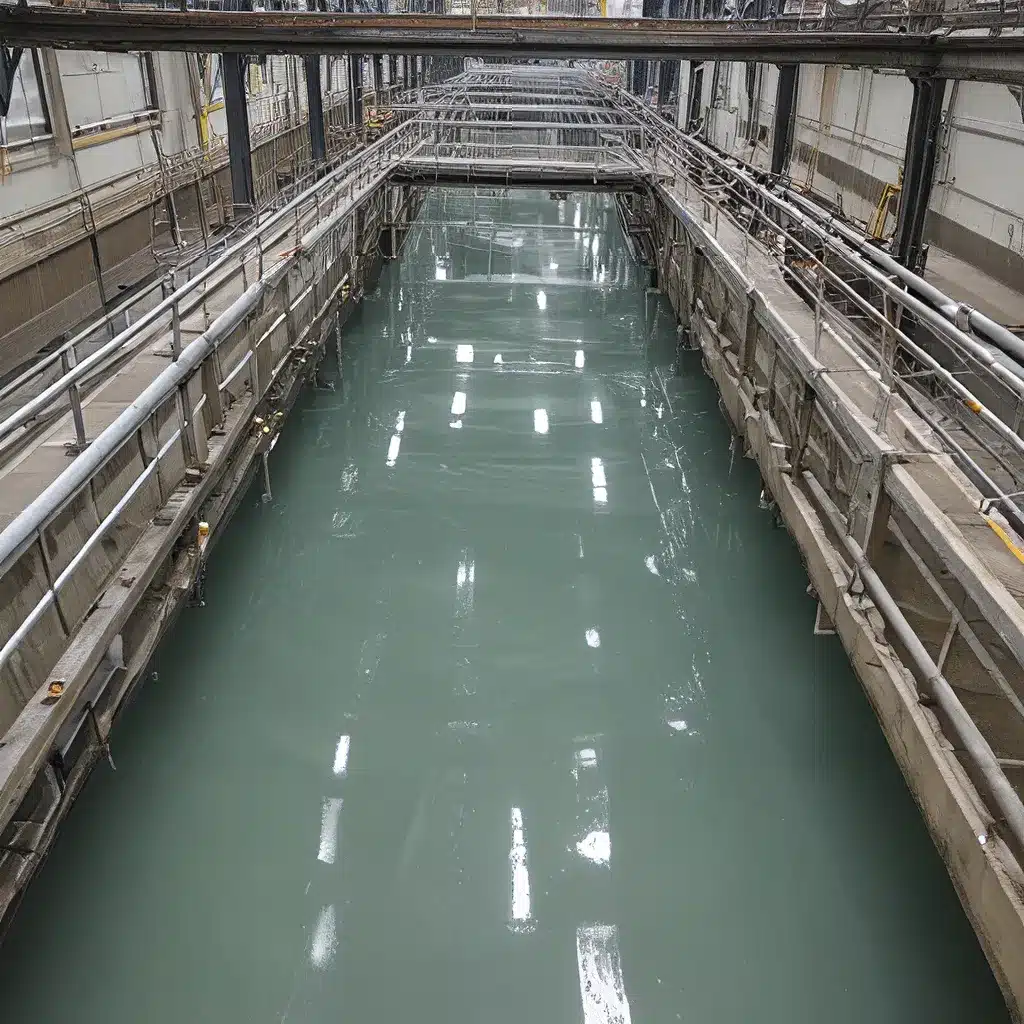
Diving into the Depths of Water Treatment and Industrial Cleaning
As an environmental enthusiast, I’ve always been fascinated by the intricate world of water treatment. It’s a domain that seamlessly combines science, technology, and a deep reverence for our planet’s most precious resource. But there’s one aspect that I’ve often pondered – the intersection between industrial cleaning and water treatment processes. How can these two seemingly disparate realms come together to create a more efficient, sustainable, and environmentally-conscious approach?
Well, my friends, that’s exactly what we’re going to explore today. Prepare to dive headfirst into the captivating world where industrial cleaning and water treatment converge, uncovering strategies that could revolutionize the way we manage our water resources.
The Evolving Landscape of Industrial Cleaning
Let’s start by taking a closer look at the ever-changing landscape of industrial cleaning. Recent advancements in automated single-use technology have been a game-changer, streamlining processes and reducing the need for extensive manual labor. This shift has introduced a new era of efficiency and precision, where industrial facilities can maintain pristine cleanliness without sacrificing valuable time and resources.
But the benefits of this technological revolution go far beyond mere convenience. By integrating industrial cleaning into water treatment processes, we can unlock a world of possibilities. Imagine a system where the waste generated from industrial cleaning is seamlessly channeled into the water treatment pipeline, transforming what was once seen as a byproduct into a valuable input. This not only reduces the burden on our landfills but also enhances the overall efficiency of the water treatment process.
Unlocking the Potential of Biosolids
Now, let’s dive a little deeper into the realm of biosolids management. Biosolids, the nutrient-rich organic materials derived from the wastewater treatment process, are often one of the highest expense items in a wastewater facility’s budget. But what if we could flip this narrative on its head?
By carefully evaluating and understanding the intricacies of biosolids management, we uncover a world of untapped potential. Perhaps the waste generated from industrial cleaning could be seamlessly integrated into the biosolids production process, creating a synergistic loop that optimizes efficiency and reduces costs. Imagine a future where the very materials that were once seen as a burden are transformed into valuable assets, fueling the growth of sustainable agriculture and beyond.
Navigating the Complexities of Biosolids Management
Of course, navigating the complexities of biosolids management is no easy feat. It requires a comprehensive approach that considers every aspect of the process, from production to disposal. As the experts at the Department of Energy’s EERE Exchange program suggest, it’s crucial to uncover strategies that improve both the efficiency and economics of a treatment facility.
This might involve exploring innovative technologies that enhance the quality and marketability of biosolids, or investigating novel methods of waste-to-energy conversion that create a self-sustaining cycle. By thinking outside the box and embracing a holistic perspective, we can unlock the true potential of biosolids management and seamlessly integrate it with industrial cleaning processes.
Forging Partnerships and Collaborations
Of course, bridging the gap between industrial cleaning and water treatment processes doesn’t happen in a vacuum. It requires a concerted effort, a coming together of diverse stakeholders, and a willingness to embrace new ways of thinking.
Perhaps we could forge partnerships with leading industrial cleaning companies, pooling our collective expertise and resources to design integrated systems that benefit both industries. Or maybe we could organize symposiums and workshops, bringing together water treatment professionals, industrial facility managers, and environmental experts to share best practices and explore innovative solutions.
The key is to cultivate a culture of collaboration, where ideas flow freely, and boundaries between disciplines are dissolved. After all, the challenges we face when it comes to water management are complex and multifaceted. By working together, we stand a much better chance of developing holistic, long-lasting solutions.
Embracing the Future of Water Treatment
As I reflect on this journey, I can’t help but feel a sense of excitement and optimism. The integration of industrial cleaning into water treatment processes is not just a lofty idea – it’s a vision that’s already taking shape, with pioneering companies and innovative thinkers leading the charge.
At Inland Waters Inc., we’re committed to being at the forefront of this transformation. We understand that the future of water treatment lies in our ability to think creatively, to challenge the status quo, and to forge new partnerships that push the boundaries of what’s possible.
So, my friends, I invite you to join me on this incredible voyage. Let’s dive deeper into the world of industrial cleaning and water treatment, exploring the possibilities, navigating the complexities, and ultimately, bridging the gap that separates these two critical domains. Together, we can create a more sustainable, efficient, and environmentally-conscious future for our most precious resource.


